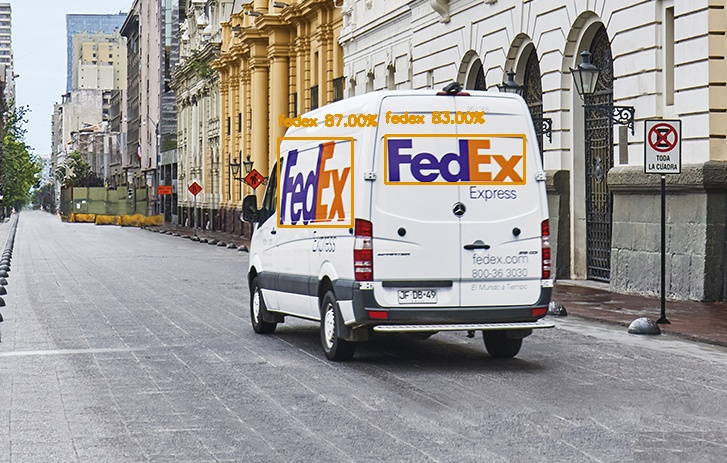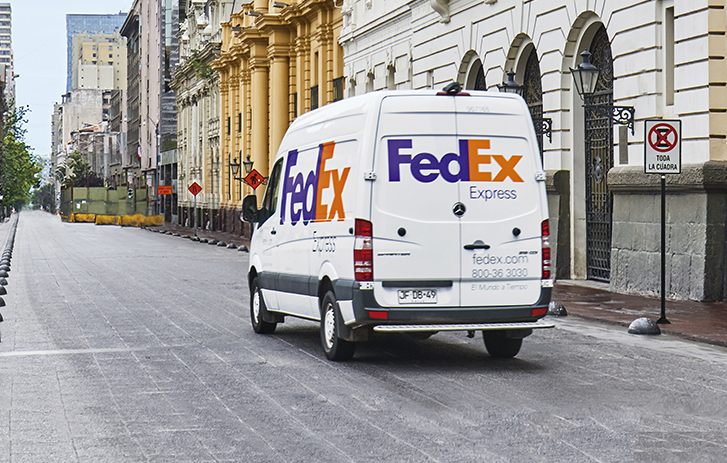This repository provides a custom DeepStack model that has been trained and can be used for creating a new object detection API for detecting all the 352 different logos in the OpenLogo QMUL-OpenLogo dataset. It also comes with details on training the model. Find more details below.
- Create API and Detect Logos
- Discover more Custom Models
- Train your own Model
All the logos the model provided in this repository can detect are in the openlogo_classes.txt file.
To start detecting, follow the steps below
-
Install DeepStack: Install DeepStack AI Server with instructions on DeepStack's documentation via https://docs.deepstack.cc
-
Download Custom Model: Download the trained custom model
openlogo.ptfor OpenLogo via this link. Create a folder on your machine and move the model to this folder.E.g A path on Windows Machine
C\Users\MyUser\Documents\DeepStack-Models, which will make your model file pathC\Users\MyUser\Documents\DeepStack-Models\openlogo.pt -
Run DeepStack: To run DeepStack AI Server with the custom openlogo model, run the command that applies to your machine as detailed on DeepStack's documentation linked here.
E.g
For a Windows version, you run the command below
deepstack --MODELSTORE-DETECTION "C\Users\MyUser\Documents\DeepStack-Models" --PORT 80For a Linux machine
sudo docker run -v /home/MyUser/Documents/DeepStack-Models -p 80:5000 deepquestai/deepstack
Once DeepStack runs, you will see a log like the one below in your
Terminal/ConsoleThat means DeepStack is running your custom
openlogomodel and now ready to start detecting logos in images via the API enpointhttp://localhost:80/v1/vision/custom/openlogoorhttp://your_machine_ip:80/v1/vision/custom/openlogo -
Detect Logo in image: You can detect logos in an image by sending a
POSTrequest to the url mentioned above with the paramaterimageset to animageusing any proggramming language or with a tool like POSTMAN. For the purpose of this repository, we have provided a sample Python code below.- A sample image can be found in
images/fedex.jpgof this repository
-
Install Python and install the DeepStack Python SDK via the command below
pip install deepstack_sdk
-
Run the Python file
detect.pyin this repository.python detect.py
-
After the code runs, you will find a new image in
images/fedex_new.jpgwith the detection visualized, with the following results printed in the Terminal/Console.Name: fedex Confidence: 0.83026457 x_min: 385 x_max: 524 y_min: 135 y_max: 183 ----------------------- Name: fedex Confidence: 0.8716001 x_min: 278 x_max: 352 y_min: 138 y_max: 226 ----------------------- -
You can try running detection for other images that contains the objects listed in the OpenLogo datasets.
- A sample image can be found in
For more custom DeepStack models that has been trained and ready to use, visit the Custom Models sample page on DeepStack's documentation https://docs.deepstack.cc/custom-models-samples/ .
If you will like to train a custom model yourself, follow the instructions below.
- Prepare and Annotate: Collect images on and annotate object(s) you plan to detect as detailed here
- Train your Model: Train the model as detailed here


